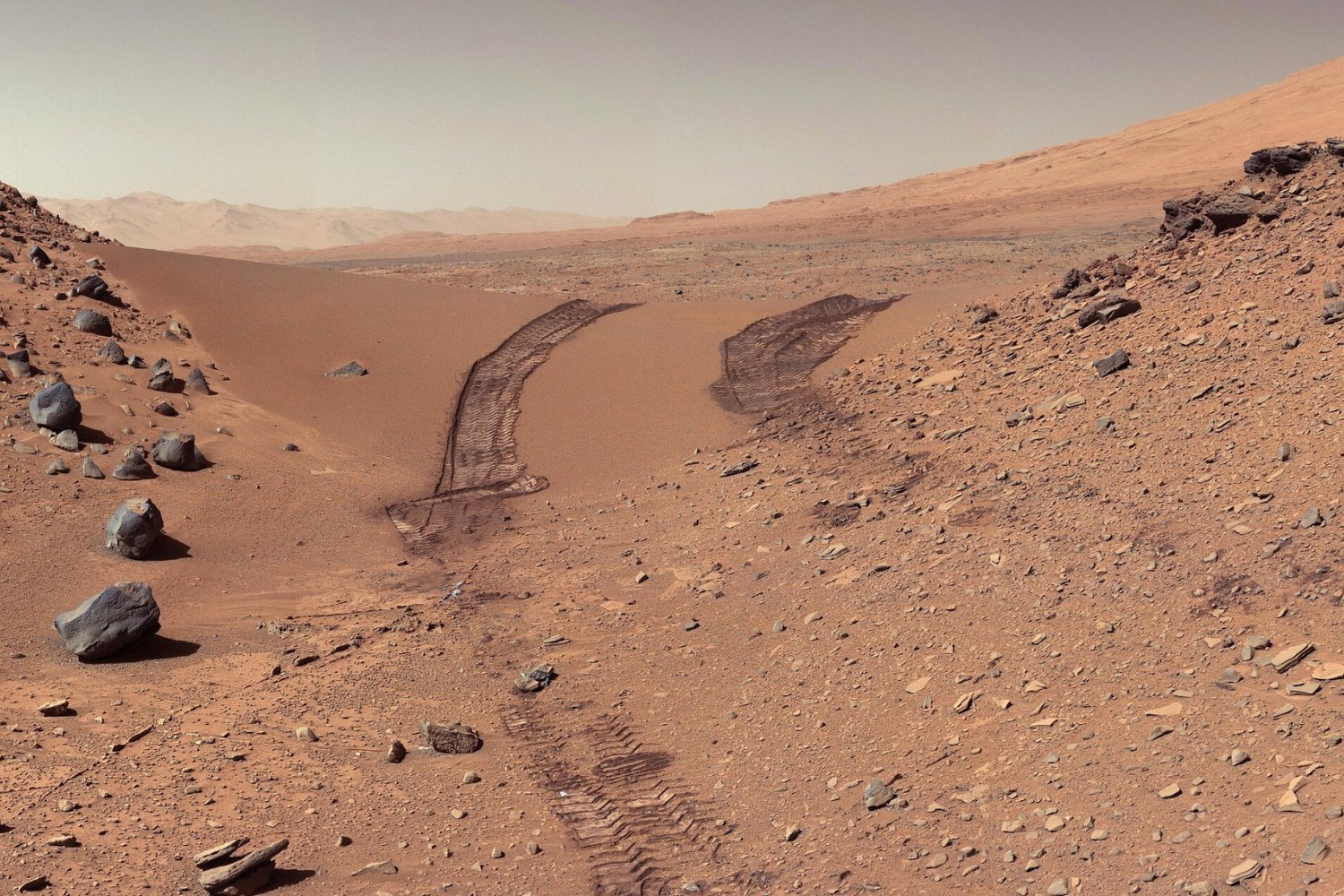
Martian Shores: Evidence Mounts for Ancient Beaches and a Habitable Past
Move over, California coastline, because Mars may have once boasted beaches that rivaled even the golden sands of Santa Monica. A recent study published in the journal PNAS has unveiled compelling evidence of ancient “vacation-style” sandy beaches on the Red Planet, hinting at a bygone era when a vast northern ocean sculpted its shores with gentle, lapping waves. This discovery, spearheaded by an international team of researchers, strengthens the growing body of evidence suggesting that Mars once possessed substantial bodies of water and a potentially habitable environment.
The research hinges on the analysis of underground rock layers, unearthed by the Chinese Zhurong rover in the Utopia Planitia region of Mars. These geological formations bear a striking resemblance to terrestrial coastal deposits, specifically foreshore deposits, which are characterized by downward-sloping structures created by water currents pulling sediments towards the ocean. The team’s findings point to a dynamic interplay between land and water, suggesting the existence of waves, wind, and abundant sand – all the hallmarks of a thriving beach environment.
"We’re finding places on Mars that used to look like ancient beaches and ancient river deltas," stated Benjamin Cardenas, a geologist at Pennsylvania State University and a co-author of the study. "We found evidence for wind, waves, no shortage of sand—a proper, vacation-style beach."
The key to this groundbreaking discovery lies in the Zhurong rover’s ground-penetrating radar, an instrument that provides a unique glimpse beneath the Martian surface. This radar technology allows scientists to peer through layers of dust and rock, revealing the hidden geological architecture of the planet.
Michael Manga, a planetary scientist at the University of California, Berkeley, and another participant in the study, emphasized the transformative nature of this technology. "It gives us a view of the subsurface of the planet, which allows us to do geology that we could have never done before."
The radar data revealed underground rock layers exhibiting the distinctive characteristics of foreshore deposits. To confirm their suspicions, the researchers meticulously compared the Martian data with radar images of similar coastal deposits on Earth. The similarities were remarkable, with even the angles of the underground Martian slopes aligning with those found on our own planet.
"This stood out to us immediately because it suggests there were waves, which means there was a dynamic interface of air and water," Cardenas explained. The presence of waves implies a vibrant and active shoreline, a place where water and atmosphere interacted, potentially creating conditions conducive to the emergence of life.
The significance of this discovery lies in its implications for the search for past life on Mars. As Cardenas pointed out, "When we look back at where the earliest life on Earth developed, it was in the interaction between oceans and land, so this is painting a picture of ancient habitable environments, capable of harboring conditions friendly toward microbial life." The ancient Martian beaches, therefore, could represent prime locations to search for evidence of past microbial activity.
Before drawing definitive conclusions, the researchers carefully considered alternative explanations for the observed geological formations. They ruled out other potential factors such as rivers, wind, or volcanic activity, concluding that the Martian formations, combined with the thickness of their sediments, strongly indicated the presence of an ancient oceanic coast.
The evidence suggests that the shoreline of this Martian ocean was not static but rather evolved over time. "We’re seeing that the shoreline of this body of water evolved over time," Cardenas added. This dynamism underscores the idea that Mars was not always the barren and desolate world we see today.
Instead, the Red Planet was once a dynamic and evolving environment, with rivers flowing, sediment moving, and land being built and eroded. This type of sedimentary geology provides valuable insights into the past landscapes of Mars, helping scientists understand how they evolved and, crucially, pinpoint the most promising locations to search for signs of past life.
The study not only supports previous research suggesting the existence of a giant ocean on Mars but also implies that one of the planet’s warm and wet periods may have lasted for tens of millions of years, providing ample time for life to potentially emerge and thrive.
If Mars truly possessed oceanfront property, its ancient shores would undoubtedly be among the most promising locations to search for evidence of past life. Future missions equipped with advanced instruments could delve deeper into these Martian beaches, seeking to answer the ultimate question: Did microbes once call these beaches home, or were they merely swept over by waves on an empty, lifeless world?
The discovery of these potential ancient beaches on Mars offers a tantalizing glimpse into the planet’s past and reinforces the idea that Mars was once a much more hospitable place than it is today. It also highlights the importance of continued exploration and research in our quest to understand the history of Mars and the potential for life beyond Earth. The allure of Martian shores, once lapped by ancient waves, now beckons us to uncover the secrets they hold and potentially rewrite the story of life in the universe. The next chapter in Martian exploration may well be focused on these ancient coastlines, searching for the echoes of a life-bearing past.
